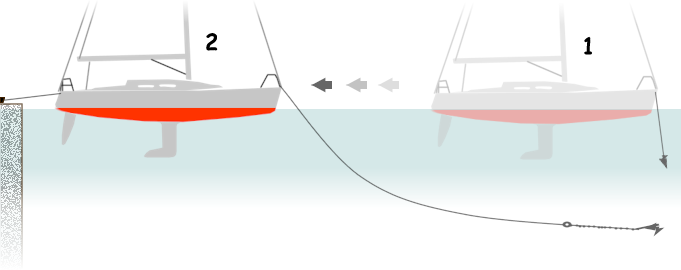Anchoring & Mediterranean mooring
This is a free course on anchoring techniques featuring anchor types, seabeds, trip lines the use of the second anchor and of course the Mediterranean mooring manoeuvre.
It is crucially important to have expert anchoring skills:
- Anchoring is about safety, and under the very worst conditions, when leaving the anchorage or port is dangerous, you should be able to rely on your anchor system since you will be near rocks, neighbouring ships and other potential dangers.
- In the east Mediterranean – especially in Greece & Turkey but also in the Adriatic & Croatia – more time is spent at anchor than under sail or moored alongside a quay → you will predominantly be anchored off the quay while Mediterranean mooring “stern to” and even sometimes “bows to”, instead of berthing alongside.
- Chapter 1 – Seabed
- Chapter 2 – Anchors - types and anchor parts
- Chapter 3 – Anchoring techniques
- Chapter 4 – Second anchor
- Chapter 5 – Mediterranean mooring and anchoring techniques
- Chapter 6 – Anchoring tips, guidelines & glossary.

Anchor origin
The Greek word for “anchor” is agkura, ἄγκυρα, which is actually a loanword from Nautical Latin “ancora”.
Wind speeds & windsacks

but serves as a gauge for determining the current wind speed.
- 3 knots
- 6 knots
- 9 knots
- 12 knots
- 15 knots or more